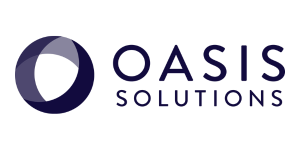Thinking about deploying CRM software and strategies? Make sure you're familiar with the terms you're reading, hearing and discussing. This handy guide will help you through the profusion of acronyms and abbreviations related to Customer Relationship Management.
A:
Application Programming Interface (API): A source code interface that a computer system or program library provides to support requests for services made via a computer program.
Application Service Provider (ASP): A provider that manages and delivers application capabilities to multiple entities from data centres across a wide area network. A type of computer bureau that provides outsourced software on a shared server over the internet for a fixed monthly fee per user.
ASP.net: A web application framework that programmers can use to build dynamic web sites, web applications and XML web services.
B:
Back Office: A term used to describe internally focused administration systems, such as accounting, finance, treasury, human resources, purchasing, sales ledger, purchase ledger, billing and so on. In many organisations these facilities are provided by an enterprise resource planning package.
C:
Call Centre: A facility for handling telephone contact with customers. A call centre has the ability to handle a considerable volume of calls at the same time, to screen calls and forward them to someone qualified to handle them and to log calls.
Campaign Management Software: Software that automates the planning, execution and assessment of targeted marketing initiatives.
Client/Server: The splitting of an application into tasks performed on separate, network connected computers, so that two or more computers work together to share processing.
Computer Telephony Integration (CTI): The integration of voice and data networks and their associated applications. It allows a website to be integrated into an existing call centre to provide further information.
Contact Centre: A central point in an enterprise from which all customer contacts are managed.
Contact Management Software: Programs that enables tracking of associates, task lists, calendars and also integrates email and personal file information with histories or interactions.
Cookie: A file created by a website and stored and updated on the visitor’s computer. It is used by the website to record data about the user, enabling the production of a customized response.
Customer Data: Customer profile data, including products and services purchase histories, profitability measures, demographic and psychographic data and contact histories.
Customer Event: An event in a customer’s life that can trigger opportunities for cross selling. Examples include moving house, marriage, birthday, birth of child, expiration of a subscription or insurance policy, holidays, etc.
Customer Profile: A record of registered preferences and purchasing patterns for a customer, it typically includes product and usage summary data, demographic and psychographic data, profitability measures, contact history across all delivery channels and promotion responses.
Customer Relationship Management: “A business strategy designed to optimize profitability, revenue and customer satisfaction. To realise CRM organisations must foster behaviors and implement processes and technologies that support coordinated customer interactions throughout all customer channels”. (Gartner Group.) Customer relationship management is aimed at increasing profits by bringing the right product to the right customer, through the right channel, at the right time.
D:
Data Mart: A subset of information relevant to a group of users, which is transferred from the warehouse to a separate departmental database.
Data Mining: Software tools that allow users to examine large volumes of numerical data to discover hidden patterns and cross-correlations that would be difficult or impossible to establish using normal query and analysis techniques.
Database: A collection of files managed by a dedicated piece of software. It may serve one or more different applications with data, including the website. Storing customer information in a database allows a system or website to be more interactive, easily managed, up-to-date and more interesting for visitors.
Deduplication: Removing duplicate records from a database. For instance, J Bloggs, John Bloggs, Mr J R Bloggs all at the same address may be the same person. It is part of the process of cleaning and integrating data.
Direct Mail: A marketing effort conducted exclusively by mail sent to large numbers of potential customers advertising a product or service and soliciting orders.
Drill Down: The ability to move from summary information to detailed data by focusing in on a particular aspect.
E:
Enterprise: An entire organisation, including divisions, sub-divisions, operating units, branches, head office and any other related organisational structure.
Enterprise Application Integration: A term to describe automating information flow between bespoke systems, packaged business applications from different vendors and websites across platforms and networks.
Enterprise Resource Planning (ERP): An integrated suite of software modules, each of which provides departmental or functional support, but which also supports business processes across departments. ERP can enable enterprises to optimize their business processes and analysis capabilities for improved speed and efficiency.
Extensibility: The ability to add new components, technology and increments to the data warehouse solution. This is a critical capability for the data warehouse architecture and technical architecture.
What CRM terms do you find most confusing? Oasis Solutions Group provides a wide range of CRM solutions, training, support and services. Do you have questions about CRM software or need help with your current Customer Relationship Management system? Contact us for help!
Look for CRM Terms to Know Part 2 next week!


